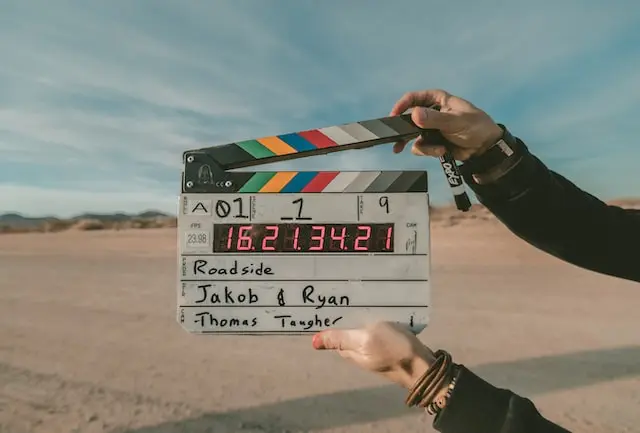Go back

Gilbert And George: No Surrender
Episode number: 1
Overview: Over the last 40 years, British artists Gilbert and George have fascinated, outraged, delighted and confounded the art establishment. Since their first appearance as 'living sculptures' in the late 1960s, their work has persistently taken a provocative, often uncomfortable look at both their own lives and the life of the city that continues to inspire their art - London. Alan is invited into their East End home, where the couple have lived together for four decades, for an intimate look at what is the most unique, productive and long-standing partnership in contemporary art.

Stealing Klimt
Episode number: 2
Overview: Alan Yentob presents a profile of the provocative French-born American artist Louise Bourgeois, who was still producing cutting edge work at the age of 95. Memories of a disturbed childhood have produced fantastic and disturbing sculptures of giant spiders and poured-plastic body parts. As a girl she restored old tapestries, worked with Leger and knew surrealists like Breton and Duchamp. In New York she emerged as an artist in her own right, bringing dread, desire, sex and the psyche into her work.

Scott Walker
Episode number: 3
Overview: Alan Yentob tells the story of Scott Walker, who was one of the all time great voices of pop, and then disappeared. This is the story of one of the enigmas of modern music, who has influenced a huge range of artists from David Bowie to Lulu to Radiohead, told through his ever-changing music. Scott Walker has crooned ballads to swooning orchestral accompaniment, and created percussion by thwacking a side of pork. For decades he was a recluse with a reputation for eccentricity, but the music was evolving all the time. Rare exclusive interview material of Walker at work on his latest album is the climax to a story told by a gallery of musicians and producers touched by his music: Brian Eno, Marc Almond, Johnny Marr, Alison Goldfrapp, Damon Albarn, Jarvis Cocker, and Ute Lemper among them.

It's The Surreal Thing
Episode number: 4
Overview: Surrealism has been described as one of the most successful revolutions of the 20th century, a revolution in perception that broke down the barriers between the world of dreams and the world of everyday reality. Its influence can be felt everywhere, in design and architecture, fashion and furniture, cinema and advertising. Even so, Surrealism is disdained by most contemporary artists, its ambitions regarded as overblown, its ideas out-moded and its greatest artists, like Magritte and Dali, dismissed as poster-art for teenage bedrooms. In this programme Alan Yentob takes a personal and dream-like journey, from Sigmund Freud's couch, where the story of Surrealism begins, to the current Surreal Things exhibition at the Victoria and Albert Museum. Exploring the history of Surrealism and its legacies, he makes the case for the Surrealist conviction that the world is 'an immense museum of strangeness'.

Damon And Jamie's Excellent Adventure
Episode number: 5

How to get on in the artworld
Episode number: 7

The Secret of Life
Episode number: 8
Overview: Starting with a look at the latest self-help phenomenon, The Secret, Alan Yentob sets out to learn from the big hitters in the self-help world: Susan Jeffers, author of the bestselling Feel The Fear And Do It Anyway; David Burns, whose book Feeling Good, The New Mood Therapy has sold over 5 million copies, and Anthony Robbins, who fills stadiums with his can-do performances. “Most people see things worse than they are so they never have to try,” says Robbins. “People say to me ‘I’m sceptical’ and I say no you’re not, you’re gutless.” Robbins has been the personal coach to a raft of celebrities including Mikhail Gorbachev and Bill Clinton. At last year’s Wimbledon, Serena Williams, another Robbins follower, was spotted with her own self-help notes: “My good thoughts are powerful. Any negative thoughts are weak. You are number one. You are the best. You will win Wimbledon.” “But let’s face it, none of us are going to win Wimbledon,” says Yentob. “And anyway, we keep being told it’s not all about winning, so why do we need these books?” “I think we all have pain,” says Amy Jenkins, writer of This Life and a self-help fan. David Burns, a pioneer of cognitive therapy, challenges pain head on with the idea that “your thoughts create your feelings, so your thoughts can change your feelings.” This is not just a fad; his self-help book on cognitive therapy is now prescribed by doctors around the world instead of antidepressants. Yentob’s optimism is bought crushingly down to earth by the Freudian psychoanalyst Adam Philips. “Freud said the purpose of psychoanalysis is to turn neurotic misery into everyday unhappiness, and what he meant by that is that people aren’t going to be transformed magically.” In search of the roots of the self-help genre, Yentob discovers Self Help by Samuel Smiles, which was published in 1859, the same year as Darwin’s The Origin of Species. “Guess which one was the bestseller?” The next blockbuster was How to Win Friends And Influence People by Dale Carnegie, published in 1936, during the Depression. “Now we live in a culture of constant change and turnover,” says the self-help critic Micki McGee. “You not only have to be employed, but constantly employable. Not only married, but constantly marriageable. And that is the moment self-help emerges as a powerful literature.” The episode ends with The Wizard of Oz, the ultimate self-help film. All the characters - the Tin Man, the Scarecrow, the Lion and Dorothy - think they have to look to the Wizard for the answers; what they eventually realise is they were within themselves all along. So has Yentob been changed by his voyage of discovery? “The truth is there is more to self-help than I thought,” he admits.